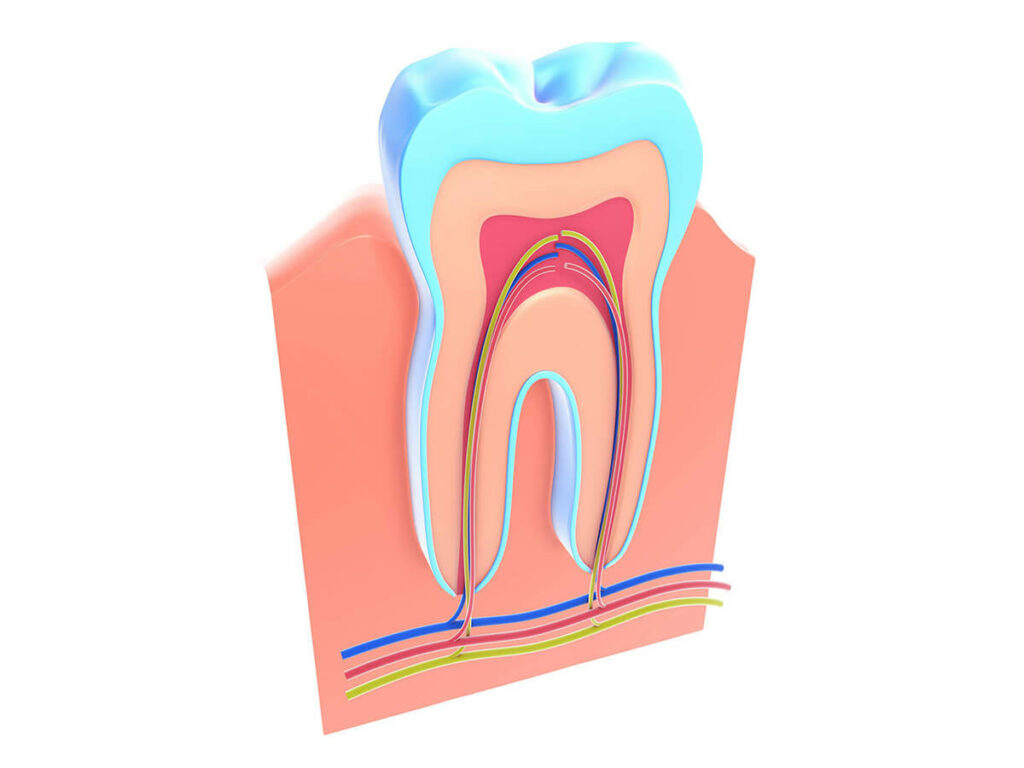Root Canal Treatment
Root canal treatment can rescue an infected tooth from inevitable extraction. It is a proven procedure that will leave your mouth healthy and strong, restoring its natural appearance.
Your Arlington Heights Root Canal Dentist
The inner structure of a tooth consists of a soft, delicate material called the pulp. This material is normally protected by the tough enamel that surrounds it. However, a potentially serious infection can occur if harmful bacteria can access the pulp. This can happen due to deep cavities or unexpected injuries. Without treatment, you could lose the tooth. Root canal treatment is an effective solution for treating a serious inner tooth infection.

-
What is a root canal?
A root canal is a procedure to save a tooth when the tissue, blood vessels, and nerves inside become inflamed. The dentist removes the infected and diseased tissue and cleans out the infected area. Then, the canal inside is medicated so the surrounding area can heal.
Symptoms of an infected root canal include:
- Severe and intense toothaches that won’t go away.
- Sensitivity to hot and cold foods and drinks.
- Swollen and tender lymph nodes.
- Recurring abscesses on the gums.
A crown may be placed after the root canal treatment to protect the tooth from further damage.
-
How is root canal treatment performed?
Root canal treatment begins with digital X-rays to assess the extent of the damage. Sedation is often provided for comfort while the dentist accesses the tooth’s inner structure from the top. Any infectious material is carefully removed, leaving the tooth hollowed out. Next, an antimicrobial liquid is used to flush the root canals down to the jawbone. The tooth is then filled with a medicated substance to provide support, strength, and healing. Finally, a dental crown is placed over the structure to protect the tooth from fractures and breakages.
-
How long does the pain from a root canal last?
There is a common misconception that root canals are very painful. However, they aren’t usually more painful than a tooth filling. Dentists typically provide an anesthetic before the procedure, so there isn’t much discomfort during and shortly after.
After the procedure, some sensitivity and discomfort are common while the area around the root canal heals. Gums can become swollen or agitated during the procedure, resulting in mild pain or sensitivity. Pain and sensitivity should subside when the tooth is healed. After your treatment, your dentist will provide special instructions on caring for your newly treated tooth.
-
What are alternatives to root canal treatment?
Many individuals facing root canal treatment wonder if there are other procedures to consider. Since endodontic therapy is typically considered a last resort for saving your tooth, the remaining options are to have the tooth extracted or to wait until you experience pain and then have it removed. Unfortunately, with either of these options, there is a risk of the infection spreading more profoundly into your face or adjacent teeth. Therefore, getting a root canal is the best solution.
If you choose to have your tooth extracted, replacing it as soon as possible is still a concern. Otherwise, the extra space in your bite can affect the alignment of your surrounding teeth. Two standard replacement options include a dental bridge or implant.
More Questions?
If you have more questions about root canal treatment, please contact our office and we will be happy to discuss further.
